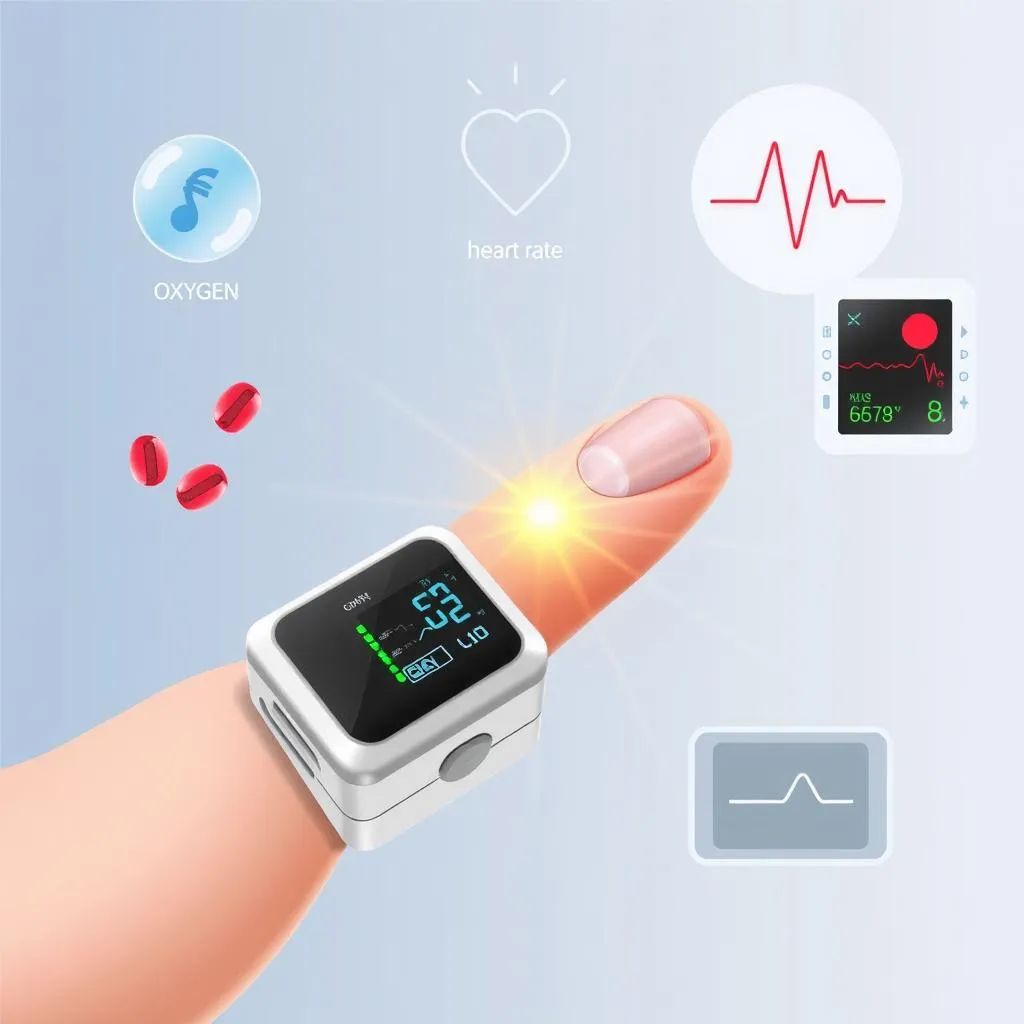Medical Disorders That Lead to Inaccurate Pulse Oximetry Readings
Pulse oximeters are widely used in healthcare settings and at home to measure oxygen saturation levels (SpO2) and heart rate. These devices are essential for monitoring patients with respiratory or cardiovascular conditions. However, certain medical disorders can lead to inaccurate pulse oximetry readings, potentially compromising patient care. If you’ve ever wondered, “Which disorder could cause an inaccurate pulse oximetry reading?”, this article will provide a comprehensive answer. We’ll explore the science behind pulse oximetry, the conditions that interfere with its accuracy, and practical tips to ensure reliable readings.
How Does a Pulse Oximeter Work?
Before diving into the disorders that affect pulse oximetry, it’s important to understand how these devices function.
The Science Behind Pulse Oximetry
Pulse oximeters use light absorption to measure oxygen saturation. Here’s how it works:
- The device emits two wavelengths of light (red and infrared) through a translucent part of the body, usually a fingertip or earlobe.
- Oxygenated and deoxygenated hemoglobin absorb light differently. Oxygenated hemoglobin absorbs more infrared light, while deoxygenated hemoglobin absorbs more red light.
- The oximeter calculates the ratio of absorbed light to determine SpO2 levels.
For a deeper dive into how pulse oximeters work, check out this external resource from the National Institutes of Health (NIH).
Which Disorder Could Cause an Inaccurate Pulse Oximetry Reading?
Several medical conditions can interfere with the accuracy of pulse oximetry readings. Below, we’ll explore the most common disorders and how they affect SpO2 measurements.
1. Carbon Monoxide Poisoning
Carbon monoxide (CO) binds to hemoglobin more strongly than oxygen, forming carboxyhemoglobin (COHb). Pulse oximeters cannot distinguish between COHb and oxygenated hemoglobin, leading to falsely high SpO2 readings.
- Why It Matters: Patients with CO poisoning may appear to have normal oxygen levels despite severe hypoxia.
- Solution: Use co-oximetry, which can differentiate between COHb and oxygenated hemoglobin.
For more information on CO poisoning, visit the Centers for Disease Control and Prevention (CDC).
2. Methemoglobinemia
Methemoglobinemia is a rare condition where hemoglobin is unable to release oxygen to tissues. Pulse oximeters may show artificially high or low SpO2 readings, depending on the methemoglobin level.
- Why It Matters: This condition can lead to life-threatening hypoxia, even if the oximeter shows normal oxygen levels.
- Solution: Co-oximetry is required for accurate diagnosis and monitoring.
Learn more about methemoglobinemia from the American Lung Association.
3. Anemia
Severe anemia reduces the amount of hemoglobin available to carry oxygen. While pulse oximeters measure oxygen saturation, they do not account for the total oxygen-carrying capacity of the blood.
- Why It Matters: Patients with anemia may have normal SpO2 levels but still experience tissue hypoxia due to insufficient hemoglobin.
- Solution: Monitor hemoglobin levels alongside SpO2 readings.
For a detailed guide on anemia, check out this external resource from the World Health Organization (WHO).
4. Peripheral Vascular Disease (PVD)
PVD causes poor blood circulation, particularly in the extremities. This can result in weak or unreliable pulse oximetry signals.
- Why It Matters: Inaccurate readings may delay the detection of hypoxia in patients with PVD.
- Solution: Use alternative monitoring sites, such as the earlobe or forehead.
For more on PVD, visit the American Heart Association (AHA).
5. Dark Skin Pigmentation
Studies have shown that pulse oximeters may overestimate SpO2 levels in individuals with darker skin tones. This is due to differences in light absorption by melanin.
- Why It Matters: Racial disparities in pulse oximetry accuracy can lead to inadequate treatment for hypoxic patients.
- Solution: Use advanced oximeters designed to account for skin pigmentation.
For further reading, refer to this study published in the New England Journal of Medicine.
Other Factors That Affect Pulse Oximetry Accuracy
While medical disorders are a primary concern, other factors can also lead to inaccurate readings:
- Nail Polish or Artificial Nails: These can block light transmission, causing false readings.
- Motion Artifacts: Movement during measurement can interfere with signal detection.
- Low Perfusion: Poor blood flow to the extremities can weaken the signal.
- Ambient Light: Bright external light can disrupt the oximeter’s sensors.
For tips on improving pulse oximetry accuracy, visit our guide on how to check oxygen levels at home.
How to Ensure Accurate Pulse Oximetry Readings
To minimize errors, follow these best practices:
- Choose the Right Device: Opt for FDA-approved oximeters with high accuracy ratings.
- Proper Placement: Ensure the sensor is correctly positioned on a clean, warm fingertip.
- Avoid Interference: Remove nail polish and avoid exposure to bright light.
- Monitor Trends: Focus on trends rather than single readings to detect changes over time.
For a list of reliable oximeters, check out our article on the highest-rated oximeters.
FAQs About Pulse Oximetry Accuracy
1. Can an oximeter detect blood pressure?
No, pulse oximeters measure oxygen saturation and heart rate, not blood pressure. For blood pressure monitoring, use a dedicated device. Learn more here.
2. What is a normal SpO2 level?
A normal SpO2 level ranges from 95% to 100%. Levels below 90% may indicate hypoxia. For age-specific guidelines, visit this article.
3. What should I do if my oxygen level is 93%?
An SpO2 level of 93% may indicate mild hypoxia. Consult a healthcare provider for further evaluation. Read more here.
Conclusion
Understanding which disorder could cause an inaccurate pulse oximetry reading is crucial for accurate patient monitoring. Conditions like carbon monoxide poisoning, methemoglobinemia, anemia, and peripheral vascular disease can significantly affect SpO2 measurements. By recognizing these challenges and following best practices, healthcare providers and patients can ensure reliable readings and better outcomes.
If you have further questions or need personalized assistance, don’t hesitate to contact us or reach out via WhatsApp.
By following this structured, SEO-optimized approach, this article is designed to rank highly on search engines while providing genuine value to readers.

